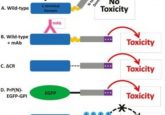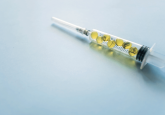Peanut allergy: a tough nut that’s starting to crack

Novel coated microneedle delivery of peanut allergen in allergic mice showed improved efficacy over current epicutaneous immunotherapy delivery via skin patches.
A new study, published in Immunotherapy, led by Jessica O’Konek from the University of Michigan’s Mary H. Weiser Food Allergy Center (USA), has utilized novel microneedle (MN) technology in desensitizing peanut–allergic mice, demonstrating improved desensitization compared to epicutaneous immunotherapy (EPIT) via skin patches. The technique represents an approach to improve the efficacy of immunotherapy treatments for allergies in humans.
Food allergies are common and yet there is a scarcity of treatment options available for these conditions. The standard option available is to avoid the allergen in a strictly controlled diet and to administer epinephrine if an exposure does occur. Essentially, these options amount to minimizing exposure and treating allergic reactions. Therefore, current research efforts are focused on dampening the severity of allergic responses, allowing people with allergies greater freedom and lower risk in their everyday life.
One approach to this issue is allergen immunotherapy, during which, a person with an allergy is exposed to their allergen in slowly increasing amounts. This aims to desensitize their immune system to the allergen. With continued exposure to the allergen, accidental exposure to the allergen in everyday life leads to a less severe immune reaction.
Allergen immunotherapy is typically administered orally or through the skin during EPIT. Oral immunotherapy treatment for peanut allergies has been approved by the US Food and Drug Administration but requires strict protocols for the user to adhere to daily. EPIT has been tested in clinical trials using skin patches; however, the efficacy has been low and varied, restricted by the variability of allergen exposure due to differences in individual’s skin barriers.
 Hate needles? Imagine swallowing your vaccines instead!
Hate needles? Imagine swallowing your vaccines instead!
An orally administered capsule has been developed, which attaches itself to the stomach lining where it injects an mRNA vaccine using a tiny needle.
Looking to improve the efficacy of allergen immunotherapy administered via the skin, O’Konek’s team used a MN array with each needle coated in peanut allergen, to deliver the substance directly into the skin, bypassing the outer skin barrier. Therefore, the MN array would allow for greater control and consistency over the dose being delivered into the skin.
To compare their technique with current EPIT methods, O’Konek’s team treated peanut-sensitized mice with either five minutes of MN immunotherapy or 24 hours of EPIT skin patch treatment, once each week for five weeks.
Mice that received the EPIT patch were not protected from allergic reaction, requiring two months of treatment before significant desensitization. Conversely, mice treated with the MN array had significantly enhanced desensitization to peanut allergen and the protection lasted for more than five weeks.
Importantly, the MN therapy resulted in this desensitization whilst administering a ten times lower dose of peanut allergen than EPIT, highlighting the benefit that a consistent and accurately controlled dosage confers to the efficiency and effectiveness of the MN technique. This greatly reduces the frequency and duration of allergen immunotherapy treatments that a person would have to receive. In addition, whilst the array is only 1 cm3 and contains 50 MNs, its design is capable of delivering a dosage suitable for humans without needing to scale up the design.
“While our pre-clinical results are from studies in animal models, they demonstrate the potential for peanut-MNs to improve food allergen immunotherapy through the skin,” commented O’Konek. “Treatment options for food allergy are limited, so there is a lot of motivation for the development of novel therapeutics. It will be exciting to watch the clinical development of this technology,”
Investigating the durability of protection from MN immunotherapy will be the focus of future work, whilst clinical trials will be critical in evaluating the technique’s efficacy in humans, both in children and adults.
“This is a very interesting technology that could provide a safer method to desensitize people with food allergies,” explained lead author James R. Baker, Jr. “These successful animal results argue for further development of this platform.”





